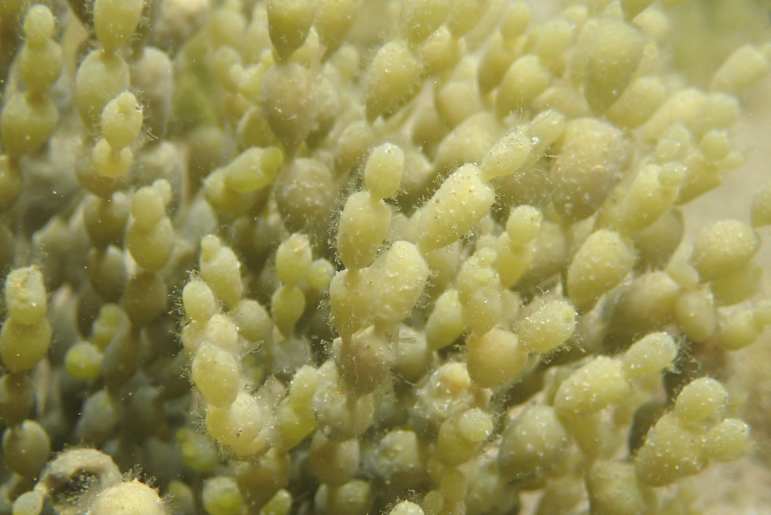
This seaweed looks like brownish green coloured beads, and it resembles a necklace, which is why it got the name Neptune’s Necklace. Photo: Paul Sorensen

Neptune’s Necklace can provide a great hiding spot or even habitat for many small creatures. In this image there is a tiny little sea critter hiding in it. Photo: Paul Sorensen
Welcome to the Marine Mili series, a regular column about all things marine! During this series I aim to inspire people to want to protect our oceans and all the marine life that call our oceans home. Hopefully after reading each column, you would have learnt something new including what we can do to help protect and preserve our oceans. You can follow me and my journey on my Instagram page: _marine_mili.
The Neptune's Necklace or the Hormosira banksia (scientific name) is a type of seaweed found in Victorian waters.
This seaweed usually is found in rockpools, rocky shores and intertidal zones and can be exposed to the air during the low tide. This is why if you go for a walk on some large rocky areas, you may see heaps of the Neptune’s Necklace seaweed scattered along the rocks.
The appearance of this seaweed is like brownish green coloured beads on a necklace which is how it got the name Neptune’s Necklace. The individual beads can be between 0.5-1.5 centimetres in diameter.
Neptune’s Necklace can provide a great hiding spot or even habitat for many small creatures, protecting many sea creatures from their predators. It plays a vital role in our ecosystems and is an important tool for many creatures. It is crucial that we all try and protect these precious little beads and when we are at the beach avoid squishing them or trampling on them where possible, for conservation purposes.
These little beads are filled with air to help the seaweed float, so it can get exposed to sunlight as it is a plant, However, these little beads also store water in them which will prevent the seaweed from dehydrating when the tides go out and they are fully exposed to air.
Some species that feed on the Neptune's Necklace seaweed include sea urchins, crustacean sometimes molluscs and many species of fish.





